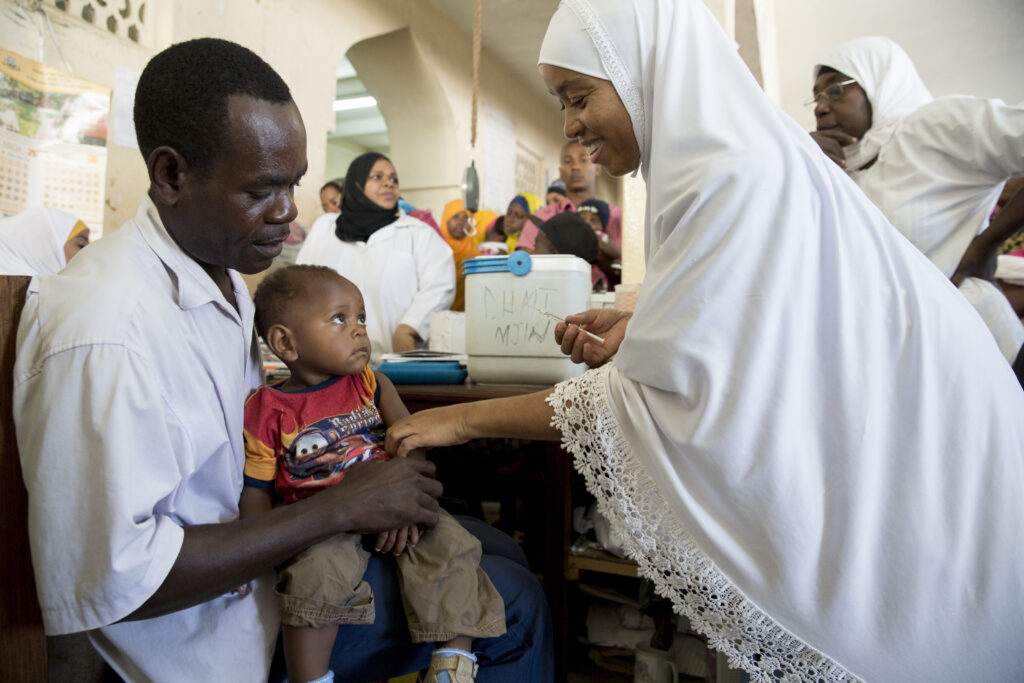Commitments into Actions: Why We’re Stepping Up for Nurses and Midwives Worldwide

Mwembeladu Maternity Hospital, Stonetown Zanzibar. Photo courtesy of Johnson & Johnson
Back in September, world leaders came together and committed to seeing good health for all realized by 2030. The Political Declaration on Universal Health Coverage was the culmination of years of advocacy, negotiation, and analysis to lay the groundwork for expanding access to healthcare for millions around the world. But as we know all too well, what is committed to in New York, Geneva or Addis does not always translate into action on the ground. While 2030 feels far away, 2020 is almost upon us and the World Health Organization (WHO) has made clear what year one of this pivotal decade needs to get us to UHC – nurses and midwives.
For my company, Johnson & Johnson, we’ve stepped forward to answer the WHO’s call to action to champion those on the front lines to achieve UHC by launching the Center for Health Worker Innovation (CHWI). The first center of its kind, CHWI aims to accelerate a set of programs in five key intervention areas to strengthen primary, community-based care. And to do that, we’re looking no further than the people who make that ambition a reality – health workers.
In my career in global development, I’ve been honored to meet true champions in healthcare, who deliver every day on the front lines of care, often against the strongest of odds. Midwives, nurses, community health workers – for so many communities, these aren’t just healthcare providers; they are neighbors, trusted advocates and, often, lifesavers. A well-trained midwife, for example, could help avert almost two-thirds of all maternal and newborn deaths. We know that when women are healthy, communities can thrive. The impact of investing in the education and empowerment of midwives doesn’t end at a safe birth; the ramifications of access to a midwife see more women living healthier, more productive lives.
Often, organizations or companies focus on a priority disease or region to funnel their efforts. For us, we realized time and time again that when we partnered with organizations to improve newborn survival rates, the solution was often to train midwives. When we collaborated with app developers to design access to health information, we relied on the connection – both digitally and personally – of nurses. When we sought to reach the proverbial and literal last mile, we turned to community health workers. It was the person at the heart of delivering care that was the key to changing health for humanity.
The Center of Health Worker Innovation seeks to catalyze the lessons so many of us have learned over the years in improving health outcomes by putting communities first. I saw this first-hand in my previous work with Save the Children when we brought a team of nurses and midwives from the United States to meet their counterparts in Rwanda and Ethiopia. Seeing what healthcare workers had to contend with in low-resource settings was an eye-opening experience for the Americans and they returned home with a new sense of respect—and a few new skills I might add—for what it takes to keep communities healthy in some of the most underserved places.
This is how we make year one of our final decade till 2030 count – by making sure health workers count. Our world’s action plan – the Sustainable Development Goals – demand significant action to realize ambitious hopes like UHC. What we hope CHWI will provide is a place where ideas and insights from across sectors can be put forward to develop integrated solutions that put health workers first. Because by supporting them, we lift whole communities.
This post was written by Phil Carroll, Senior Advocacy Manager, Global Community Impact, Johnson & Johnson. As a healthcare company, Johnson & Johnson strives to improve access and affordability, create healthier communities, and put a healthy mind, body and environment within reach of everyone, everywhere. Johnson and Johnson was a Champion Sponsor for the 2019 Global Health Landscape Symposium.